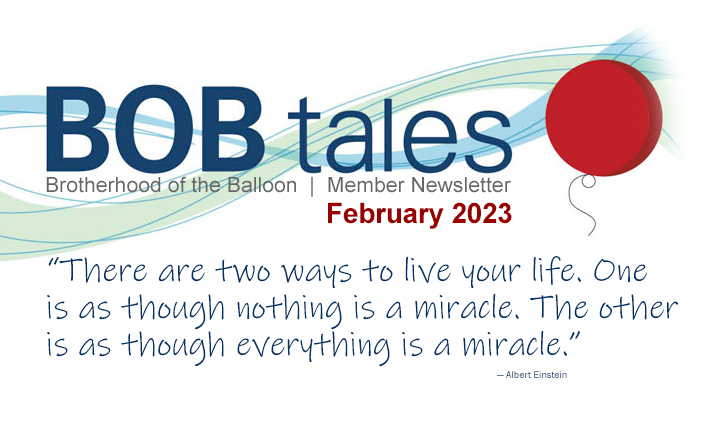
Dear Members (a note from Bob Marckini):
Occasionally, Deb “allows” me to write the opening memo to our monthly BOB Tales. It also gives her a bit of a break from the enormous task of organizing, writing, and distributing our comprehensive newsletter each month, which goes to thousands of people, both BOB members as well as hundreds of others.
Next month is my favorite granddaughter, Gemma’s, 12th birthday (Note: I have only one grandchild.). It seems like just yesterday Deb and her husband Mark adopted their beautiful baby from Ohio. And what an incredible addition and joy she’s been in our lives!
Next month is also the anniversary of one of the darkest times in our family. Nine years ago, Mark was diagnosed with advanced, metastatic, extremely aggressive pancreatic cancer at age 41. He was given just a few months to live. To say the least, none of us was prepared for that, especially little Gemma, who was just 3 at the time. Chemotherapy was prescribed, but only as a way of buying Mark some time, delaying the inevitable.
Deb did everything humanly possible (and then some) to comfort and treat her husband, shield her daughter from the horrors of what was happening in the family, and run the household. She did all this while identifying and trying every alternative healing approach she could find on the Internet. Friends jumped in to provide meals and support in every imaginable way. Mark – who was already slender – lost much of his body weight and strength, but dutifully followed all the medical protocols as well as Deb’s alternative treatments.
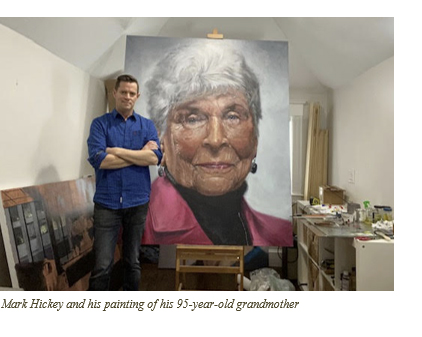 In the meantime, we prayed hard; and we asked all our friends to pray – as well as the Sisters of the Missionaries of Charity in New Bedford, MA, and the congregation at St. Edwards parish in Deb and Mark’s hometown of Medfield, MA. Also, one of our members was a pastor of a huge congregation in the Midwest. He and his 93,000 Twitter followers were also asked to pray for Mark. Our family was literally and figuratively brought to our knees.
In the meantime, we prayed hard; and we asked all our friends to pray – as well as the Sisters of the Missionaries of Charity in New Bedford, MA, and the congregation at St. Edwards parish in Deb and Mark’s hometown of Medfield, MA. Also, one of our members was a pastor of a huge congregation in the Midwest. He and his 93,000 Twitter followers were also asked to pray for Mark. Our family was literally and figuratively brought to our knees.
Four months later, an interesting thing happened. Mark’s final CT scan, after he completed his primary chemotherapy protocol, was completely clear. There was no cancer.
A miracle? “There’s no other way to explain it,” reasoned the world-renowned cancer specialist who consulted on Mark’s case.
Mark is still cancer free. He’s back to work as an art director at a marketing agency and painting extraordinary (and large) portraits, landscapes, and seascapes in his home studio. He’s also a great cook, skier, and tennis player, and manages to beat me at golf several times each summer.
Our family has much to be thankful for as we begin this new year.
-------------------------
Looking over this month’s BOB Tales, I’m amazed at how far we’ve come over the years. Our February 2023 issue is packed with valuable and timely information. Our Internet alerts as well as our astute and vigilant members keep us abreast of the latest developments on subjects that should be of interest in our group. We sort through these to select and abstract those articles we feel would be of most interest to our readers.
This edition has the latest information on targeted cancer treatment; drugs that can trigger our immune system to attack prostate cancer; new, electronic “sniffing” technology for diagnosing prostate cancer; a possible substitute for PSA screening; a connection between melanoma and prostate cancer; a new twist on ADT combined with radiation; a new tool for assessing prostate cancer risk; more reasons to be cautious about switching to Medicare Advantage plans; lifestyle changes to reduce prostate cancer risk; more on the Gleason 6 prostate cancer debate; and remembering an unsung hero, BOB member Clyde Marsh.
As always, we love to get feedback on the newsletter and welcome any suggestions you have on how to improve the value of the BOB Tales to our members. Just send an email to [email protected].
Bob Marckini
To print the BOB Tales newsletter or view the newsletter with a larger font size, click here for the PDF file.
.jpg)
In This Issue:
- Targeted Breast Cancer Treatment — Prostate Next?
- Gleason Score 6 Not Cancer? World Renowned Expert Weighs In
- More on Medicare Advantage Problems and Denials
- Can Aspirin Prevent Cancer?
- Yoga for Prostate Related Issues
- Lifestyle Changes to Reduce Risk of Prostate Cancer Recurrence
Targeted Breast Cancer Treatment — Prostate Next?
For early-stage breast cancer, in the past, it was common to do a lumpectomy – removal of just the tumor – followed by radiation, when there was a single malignancy. With two or more lumps, doctors typically recommended complete breast removal. Today, more and more women are choosing lumpectomies even with multiple tumors in one breast.
U.S News reported Dec. 10, 2022, on a study, supported by the National Institutes of Health involving 200 women who had two or three tumors in one breast and had lumpectomies followed by radiation. The women ranged in age from 40 to 87. Only 3 percent of these subjects saw their cancers return at five years. This recurrence rate is similar to past studies on women with only a single tumor. Apparently improved imaging techniques are making these focal procedures possible. Some doctors are routinely offering focal therapy for multiple breast tumors to their patients, according to Dr. Judy Boughey of Mayo Clinic, who led the research.
Dr. John Kiluk, a surgeon at Moffitt Cancer Center said, “This study caught my attention very quickly. It is definitely a step forward for our field.” The advantages of lumpectomy include quicker recovery and generally better cosmetic results.
What about focal treatment for prostate cancer?
For decades, focal treatment for primary prostate cancer has been considered too risky. Doctors have felt that even though one or two tumors might be visible by older imaging technologies, there was always the possibility, or even probability, that there were other, smaller malignancies within the prostate that would go untreated. If focal therapy were used, they felt, there was a high probability the patient would have a recurrence and require salvage treatment.
With recently developed, significantly improved imaging techniques, such as 3-Tesla multi-parametric MRI and Ga68 PSMA PET/CT scans, doctors have a much clearer picture, than ever before, of the location, size, and staging of malignancies. In fact, these imaging techniques are allowing doctors to treat localized prostate cancer recurrences with targeted treatments, such as proton beam, focal laser ablation, focal cryotherapy and high intensity focused ultrasound (HIFU).
We believe it’s just a matter of time before doctors will begin treating early stage, primary prostate cancer with targeted therapies. The benefits to the patient could be enormous: shorter treatment times and dramatically fewer side effects, just to name two. Stay tuned.
Gleason Score 6 Not Cancer? World Renowned Expert Weighs In
In our September 2022 issue of BOB Tales, we wrote about a proposal that Gleason 3+3=6 prostate cancer should no longer be called “cancer.” This is the position taken by Dr. Scott Eggener, associate professor of surgery and urologic oncology at the University of Chicago Medicine. He published an article in the Journal of Clinical Oncology in April 2022 titled, “Low-Grade Prostate Cancer: Time to Stop Calling it Cancer.” We took issue with this and listed the reasons why we disagreed.
We later heard from dozens of members who agreed with our position, and that not calling Gleason 6 disease cancer would be dangerous. Only one member wrote that he disagreed with our position and felt the proposed change made sense.
Recently, one of the most prominent voices in the world on prostate cancer weighed in on this subject in an article titled, “Gleason 3+3=6 is Not ‘Not Cancer,” published on the Prostate Cancer Foundation website.
We often refer patients to urological pathologist, Jonathan Epstein, M.D., at Johns Hopkins. His lab is one of the best in the world for getting a second opinion on prostate cancer biopsy results. As mentioned in both editions of Bob’s book, the reading of biopsy slides can be extremely subjective, and quite often two pathologists will come to different conclusions on prostate cancer staging. This can result in either under-staging and over-staging prostate cancer, both of which can cause serious harm to the patient.
In the article mentioned above, Dr. Epstein takes issue with the proposal to drop the “cancer” designation for Gleason 6 disease, (commonly referred to as Grade Group 1) and begin referring to it as IDLE, “Indolent Lesion of Epithelial Origin.”
Reasons to Keep the 'Cancer'
“There are some very good reasons to keep the cancer designation for Grade Group 1,” says Dr. Epstein, the creator of the internationally accepted Grade Group system for prostate cancer staging.
Epstein says that, “under the microscope Grade Group 1 cancer has some of the same behaviors as higher-grade cancer.” And, although not aggressive, it can still “invade nerves, go out of the prostate, and even invade the seminal vesicles.” He feels Gleason 6 cancer has some of the hallmarks of higher-grade cancer along with features you don’t see in benign prostate tissue.
Proponents of changing the cancer designation for Gleason 6 to non-cancer, seem to believe that if you remove the cancer label, patients and doctors would be less inclined to over-treat low-grade disease. Also, they feel a non-cancer designation might reduce stress in patients with Gleason 6 disease.
Another worry Epstein has is that the patient would be less likely to follow the rules of active surveillance, monitoring PSA, and having imaging tests and follow-up biopsies. This could result in missing some diseases that progress beyond Grade Group 1 and need treatment.
Epstein points out that, “not all cancers are the same,” and, “not everyone needs treatment right away – or ever – and that low-grade cancer can be followed carefully and safely.”
► BOB Comment: We stand by our position to maintain the cancer designation. Removing it could do much more harm than good.
We also think it’s worth mentioning – we love hearing from our members on these issues – keep the opinions coming!
More on Medicare Advantage Problems and Denials
 Since we posted the article in our December BOB Tales newsletter, we’ve heard from lots of members who have had bad experiences with Medicare Advantage insurance plans. These plans are heavily marketed. Claims are often made that these plans offer everything your current government Medicare plan offers plus additional perks, such as dental and eyeglass coverage. And all this for less money! What the subscriber often discovers is that they’re losing some important features like access to some of their former doctors or to certain medical treatments, such as proton therapy.
Since we posted the article in our December BOB Tales newsletter, we’ve heard from lots of members who have had bad experiences with Medicare Advantage insurance plans. These plans are heavily marketed. Claims are often made that these plans offer everything your current government Medicare plan offers plus additional perks, such as dental and eyeglass coverage. And all this for less money! What the subscriber often discovers is that they’re losing some important features like access to some of their former doctors or to certain medical treatments, such as proton therapy.
A BOB Member's Experience
One of our new members is a surgeon who chose proton therapy for his prostate cancer after completing his due diligence. His private, for-profit Medicare Advantage carrier denied coverage and he was told he’d have to pay out-of-pocket for treatment or choose a less-expensive option. He paid out-of-pocket, began treatment, and concurrently appealed his denial.
Fortunately, this member won his case and is being reimbursed. But this isn’t always the case. Most of the time the appeal is unsuccessful and the patient has to choose an alternative treatment option, like IMRT, which his insurance will cover. Or, he must pay tens of thousands of dollars out-of-pocket to have proton therapy.
Cracking Down on Deceptive Advertising
A Dec. 17, 2022, article in The New York Times reported on some of these problems as well as some steps being taken to crack down on misleading ads for these privately managed Medicare plans. One deceptive ad shows a white truck painted with a large red, white, and blue sign that says, “MedicareBus.com,” which is a private, for-profit insurance company, and not government-run Medicare as the sign implies.
According to the article, complaints are widespread; patients are complaining about medical claims that are being wrongly denied and the proposed plans by these companies are deceptive. A recent report by the inspector general of the U.S. Department of Health and Human Services found that “several plans might be inappropriately denying care to patients.” Also, almost every large insurance company in the program has been sued by the Justice Department for fraudulently overcharging the government. These companies include United Heath Group, Elevance Health, Kaiser Permanente, and Cigna.
Sen. Ron Wyden, chairman of the Senate Finance Committee, said, “Steps are being taken to protect seniors in Medicare from scammers and unscrupulous insurance companies and brokers.”
Moving Forward
The Times article stated that the new proposed regulations aren’t final, though other news outlets are reporting that in 2023, insurers won’t be able to air television ads for Medicare Advantage plans before getting approval from federal regulators.
The Centers for Medicare and Medicaid Services also recommended several best practices for Medicare Advantage Organizations and Part D sponsors, including ensuring beneficiaries know how to file a marketing complaint with 1-800-MEDICARE or the plan, as well as highlighting for beneficiaries that it’s important to provide an agent or broke name, if possible. It also suggested sponsors ensure marketing materials clearly state when certain benefits may not be available to all enrollees.
► BOB Comment: We think it’s important to be aware of false claims often made by for-profit private Medicare Advantage companies. We still believe the “gold standard” is government-run Medicare with appropriate supplemental coverage added.
We’ve been producing BOB Tales newsletters for more than 20 years. During this time there have been articles that many new members haven’t seen, and some older members may have forgotten. So, we periodically re-run articles from past newsletters. The following is from March 2007.
Can Aspirin Prevent Cancer?
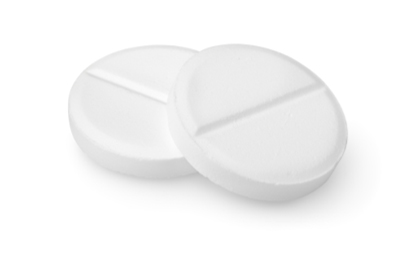 The great aspirin debate continues … For decades, scientists have chased the hope that aspirin could be an easy way to prevent certain cancers. The idea: Aspirin fights inflammation, and thus pain, by inhibiting substances known as cyclooxygenase, or COX, enzymes. COX enzymes also are involved in the formation of certain kinds of tumors, such as colorectal, prostate, and breast cancers.
The great aspirin debate continues … For decades, scientists have chased the hope that aspirin could be an easy way to prevent certain cancers. The idea: Aspirin fights inflammation, and thus pain, by inhibiting substances known as cyclooxygenase, or COX, enzymes. COX enzymes also are involved in the formation of certain kinds of tumors, such as colorectal, prostate, and breast cancers.
Researchers at the American Cancer Society wondered if earlier studies used too low a dose of aspirin to have an anticancer effect. So they examined adult-strength aspirin – 325 mg or more – in a study tracking more than 140,000 people.
The study results, published in the Journal of the National Cancer Institute, reported that people who took an adult-strength aspirin daily for at least five years had a 30 percent lower risk of colorectal cancer, a 20 percent lower risk of prostate cancer, and 15 percent less cancer overall.
So, can aspirin prevent prostate cancer? Researchers feel the jury is still out.

In Memoriam: Clyde Marsh
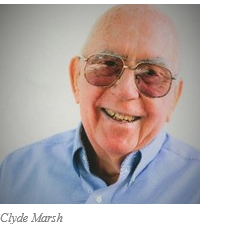 When Clyde Marsh finished his proton treatment in 2007, he was so thankful for his experience he spent the next 10 years “paying it forward.” If you were treated at Loma Linda Cancer Center (LLUCC) between 2007 and 2017, you probably met him.
When Clyde Marsh finished his proton treatment in 2007, he was so thankful for his experience he spent the next 10 years “paying it forward.” If you were treated at Loma Linda Cancer Center (LLUCC) between 2007 and 2017, you probably met him.
Since Clyde lived just 20 minutes from LLUCC, he returned to the hospital regularly. He attended every Wednesday night meeting and volunteered to greet patients at every Tuesday evening potluck dinner. Eventually, Clyde and his wife Sylvia took over all potluck responsibilities. They even organized fundraisers among the attendees and raised thousands for proton therapy research.
Clyde cared about the people he met. “I want to help patients and their families step back from their medical situation and take part in a fun night of food and fellowship,” he said. “I’ve met hundreds of people – and I remember them all by first and last name.”
Clyde also spent about 30 hours a week mentoring patients in treatment. He supported the BOB by making phone calls to members as part of our old “Calling Campaign,” and printed and mailed the monthly BOB Tales newsletters to those without email or computer access.
When he wasn’t helping others, Clyde was on his bicycle or flying around in a hot air balloon – he was a pilot! He was an avid cyclist, having traveled to Europe and pedaled his way across several countries during an annual summer vacation with friends.
When Clyde was diagnosed with prostate cancer at age 73, he felt fortunate to live so close to “the best hospital in the world,” he said. He and Sylvia were devout Christians and were comforted that LLUCC was a Seventh-day Adventist institution.
There are many former proton therapy patients and significant others who are grateful for the part Clyde and Sylvia Marsh played in their lives. Many say the potluck gatherings were a vital part of their treatment program, and many remain in touch with each other more than 15 years later.
Both Clyde and Sylvia passed away in 2022. We hope they knew what a difference they made, and how much so many patients appreciated their selfless contributions to their lives.

Saying 'Thank You' in a Truly Meaningful Way
Several times during the year we hear from members we’ve helped in one way or another – through Bob’s book, phone conversations, email exchanges, our patient reference lists, or newsletter articles. They express their thanks for whatever role we played in helping them access proton therapy. They often comment on friends who’ve chosen alternative treatment options and they describe the difference in their results and quality of life. Sometimes, they end their email by offering to send us a check to help defray our costs. Our response is always the same: If you want to say “thank you” in a truly meaningful way, send a check to Loma Linda University Cancer Center.
Thank you to the hundreds of you who made gifts in 2022. You are making a difference.

Giving Options
Online
From the pull-down menu, choose where you'd like to direct your gift — 1) Proton Research through the James M. Slater Chair, 2) Proton Research through the Robert J. Marckini Chair, or 3) choose "Other" and specify where you'd like your gift directed in the space provided.
By Check
- Make your check out to "LLUCC."
- Specify where you'd like to direct your gift in the memo line — 1) Slater Chair, 2) Marckini Chair, 3) Theranostics, or 4) write "Unrestricted" so LLUH can use it where it's needed most.
- Mail your check to: LLUH, Office of Philanthropy P.O. Box 2000, Loma Linda, CA 92354.
By Phone
- Call Regina Joseph at 909-558-5010.
Yoga for Prostate Related Issues
 A study published in the National Library of Medicine found perioperative yoga – practicing the exercise around the time of treatment – improved quality of life, promoted an immune response, and reduced inflammation in men with prostate cancer.
A study published in the National Library of Medicine found perioperative yoga – practicing the exercise around the time of treatment – improved quality of life, promoted an immune response, and reduced inflammation in men with prostate cancer.
Yoga also helps strengthen the muscles of the pelvic floor for better bladder control and may also lessen the severity of benign prostatic hyperplasia (BPH) symptoms.
There are specific poses that have been shown to be effective in preventing bladder problems and prostate-related disorders. These include the virasana (hero pose) and baddha konasana (cobbler’s pose).
“Stress reduction is a key component of yoga for prostate hypertrophy. Few people are aware that stress poses a significant risk for BPH. The symptoms of urine incontinence can get only worse if you’re constantly worried,” said Himalayan Siddhaa Akshar, founder of Akshar Yoga Institutions in Rishikesh, India. “In men with prostate cancer, yoga has also been demonstrated to reduce symptoms brought on by the treatment. Yoga is a simple and effective approach to feeling healthier and more relaxed by lowering stress levels.”
Lifestyle Changes to Reduce Risk of Prostate Cancer Recurrence
Dr. Stacey Kenfield, Associate Professor in the Departments of Urology and Epidemiology and Biostatistics at UCSF recently unveiled her research on the Prostate 8 study, a collection of lifestyle changes that have been shown to reduce a patient’s risk of prostate cancer recurrence or death from the disease. The title of the study is based on the eight factors she found to be most beneficial for reducing risk of prostate cancer progression and mortality.
1. Don’t smoke: Smoking has been associated with a 40 percent increase in prostate cancer risk relative to nonsmokers. Smoking may also boost the odds that you’ll develop aggressive prostate cancer that spreads to other parts of the body. As such, Dr. Kenfield recommends not smoking.
2. Exercise vigorously: Several studies have found that vigorous exercise significantly reduces the risk of prostate cancer recurrence, compared with the same volume of exercise at a slower pace. Dr. Kenfield’s research found that three or more hours each week of vigorous activity was associated with a 61 percent lower risk of dying from prostate cancer. You should be breathing hard; your heart rate should be elevated; and you shouldn’t be able to say more than a few words without pausing for breath. Try jogging, running, hiking uphill, singles tennis, or racquetball.
If you can’t do vigorous exercise, aim for at least four to five hours of moderate activity – like brisk walking – to get your heart rate up.
3. Eat cruciferous vegetables: Cruciferous vegetables, such as kale, arugula, and broccoli, help to prevent prostate cancer progression. The cancer-fighting properties are attributed to compounds, called glucosinolates, which are found in all cruciferous vegetables.
Dr. Kenfield recommends eating a variety of cruciferous vegetables – preferably five or more servings – daily.
► BOB Comment: We’ve written about the health benefits of cruciferous vegetables dozens of times. Most cruciferous vegetables are rich in vitamins and minerals. And the dark greens – like kale and arugula – are also a source of vitamins A and C and can help lower inflammation.
4. Cook your tomatoes: Dr. Kenfield recommends seven or more servings of tomatoes each week. She prefers cooked tomatoes because they have more bioavailable lycopene.
5. Eat fish: Dr. Kenfield recommends two or more servings of fish per week. Studies have found that fish high in omega-3 fatty acids, like salmon, protect against prostate cancer progression.
► BOB Comment: If you don’t eat fish, talk to your doctor about omega-3 supplements. Researchers have hypothesized that fish-derived omega-3 fatty acids also protect against prostate cancer.
6. Eat less – or eliminate – red meat: Dr. Kenfield recommends reducing your intake of red meat. Many studies suggest that red and processed meats are linked to a higher risk of prostate cancer. Further, processed meats contain nitrates, used as preservatives, that can increase prostate cancer risk and progression, so limit foods like hot dogs, ham, and sausage. The consumption of overcooked red meat can also increase prostate cancer risk and progression because the two types of carcinogens present are heterocyclic amines – related to pan searing – and polycyclic aromatic hydrocarbons, which come from smoke. Therefore, limit grilling or barbecuing.
7. Avoid sugary foods: Dr. Kenfield recommends avoiding or significantly limiting consumption of sugary foods. Diets high in sugar and artificial sweeteners not only promote weight gain, Type 2 diabetes, and heart disease, they may also fuel cancer growth.
8. Limit dairy intake: Consuming whole milk after a prostate cancer diagnosis is linked to increased risk of disease progression and death. However, Dr. Kenfield says that dairy products don’t need to be avoided entirely because low-fat and non-fat dairy aren’t “consistently” associated with bad prostate cancer results.
► BOB Comment: It’s important to note that several studies have associated the consumption of dairy products with an increased risk of developing prostate cancer and disease mortality.
In our March issue of BOB Tales, we told you about laboratory experiments that showed cow’s milk stimulated growth of prostate cancer in a petri dish, while almond milk, for example, suppressed prostate cancer growth. Other studies documented in Dr. Greger’s How Not to Die book showed that high intakes of dairy products like milk and cheese appeared to increase prostate cancer risk.

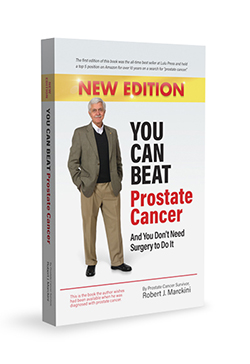 You Can Beat Prostate Cancer: And You Don’t Need Surgery to Do It – Second Edition
You Can Beat Prostate Cancer: And You Don’t Need Surgery to Do It – Second Edition
188 Amazon Reviews
As of this writing, there are 188 reviews on Amazon, almost all five-star, and the book is in the No. 2 position on a general search for “prostate cancer” in the books category.
Following is a recent review by a Kindle customer:

Life Saving Information: Everything the author wrote was spot on. Bob’s advice concerning getting second and third opinions is so true. Reading cover to cover prepared me to make many decisions and I am eternally grateful for finding this book. Every one of the men had different stories about their medical care leading up to reading Bob’s book and all were thankful they were having proton therapy. Loma Linda could not have been more kind and caring.

The Personal Side
Last month we continued with our series of excerpts from Chapter 9 of Bob’s latest book, switching from the technical stuff to the personal side of Bob’s experience of treatment, looking back on the events of 22 years ago. In our November BOB Tales we reported on Bob and Pauline’s arrival in Southern California and some humorous events leading up to the start of treatment. The Dec./Jan. BOB Tales reported on Bob’s first treatment experience, including the setup in Gantry 3; Bob’s emotions as he lay in the pod waiting for his first proton beam delivery; his relief on learning the treatment really was painless and uneventful; and his realization that he had – in fact – made the right treatment decision.
This month we’ll cover the benefits of an early treatment time; Bob’s daily routine; how he continued his education on the technology of proton therapy; why Pauline and Bob were never bored during their eight-week stay; and the importance of paying attention to nutrition while in treatment:
Early Treatment Time
I quickly learned that being treated in the middle of the day was undesirable. It didn’t allow me to schedule golf, or for us to go sightseeing in the beautiful Inland Empire. So, I asked if it were possible to shift to an earlier time slot. A few days later I had a 7:20 a.m. appointment time. This was perfect because it gave us the entire day to have fun. It also gave us a three-day weekend (I was finished for the week early Friday morning), with plenty of time to explore a large part of Southern California.
I didn’t know how lucky I was to get this early time slot until later, when I learned that, as the day progressed, the probability of the schedule becoming disrupted by late arrivals, occasional equipment problems or computer glitches increased somewhat.
Golf, Guitar, and Grazing
I learned there are about 30 golf courses within short driving distance of Loma Linda. The Redlands Country Club, one of the oldest golf courses in Southern California, was about five minutes from our apartment. This private club offers LLUCC outpatients temporary memberships at a reasonable price. So, it looked like my golf needs would be taken care of.
Next, I searched for and found a music store and guitar teacher to help me improve my skills with that uncompromising six-stringed instrument.
The Redlands, CA, Chamber of Commerce and the local AAA were most helpful in providing us with information about local tourist attractions, maps, and driving directions.
There are lots of excellent restaurants in the area. Pauline and I set out to visit each one of them. We never had to travel any farther than San Bernardino, Redlands, or Riverside for superb dining that would satisfy the taste of even the most discriminating gourmet.
My Routine
For the next two months I arose at 6:30 a.m., showered, drank my 24 ounces of water (16 ounces were required, but the “recovering engineer” wanted a little insurance), had my treatment, and was back at the apartment in time to make coffee and awaken my wife to plan a fun day of golf, tennis or sightseeing. This is hardly the scenario one would expect for treating a life-threatening disease.
Each patient is encouraged to meet with his radiation oncologist weekly. I met with my doctor on Wednesdays, but since the treatment was going so smoothly, I rarely had anything of consequence to talk about. I was fascinated by proton treatment, so I used the meetings as opportunities to learn as much as I could about proton treatment technology.
Pauline joined me for many of the meetings, and her questions were answered as well. I found myself looking forward to my weekly meetings.
The Nutritionist
During the first week of treatment, patients are asked to meet with the department of radiation medicine nutritionist. While it’s not essential to change your diet during treatment, avoiding certain foods could help prevent some temporary, minor intestinal problems, such as diarrhea.
Pauline and I met with Stella, a wonderful Jamaican lady with a smile that won us over before she spoke a word. Soft gospel music was playing on her portable stereo, and I had a good feeling about the meeting we were about to have.
We learned that Stella was a Seventh-day Adventist, and as such she followed the Adventist diet regimen, which is largely vegetarian, with other restrictions such as no caffeine or alcohol. Thankfully, she didn’t tell me I had to temporarily curtail my meat, caffeine or wine during treatment. Eliminating meat, I could possibly handle, but giving up breathing would be easier than skipping my morning coffee.
Stella gave me some information on a healthful diet for life, with some specific suggestions for minor diet changes during treatment, including avoiding such foods as nuts, prunes and green leafy vegetables.
I can’t say that I strictly followed Stella’s recommendations during treatment, but I did make a few changes.
My diet was generally healthful. I rarely ate red meat, eggs, or butter at the time. Chicken, turkey, and fish were regular staples. Salads, fresh vegetables, and bean soups were also a part of my regular diet. Breakfast typically consisted of a banana, oat, bran or wheat cereals, and of course, coffee. A man needs a few vices in his life!
I later learned that many proton patients have life-changing experiences at Loma Linda that go beyond being cured of cancer. Often this begins with Stella’s tips on diet and nutrition, and her explanation of how important this is to our general health and longevity. Most patients, I learned, complete their treatment leaving with a commitment to a healthier overall lifestyle. We were no exception.
Based on subsequent reading and research, I’ve since made several changes in my diet and will discuss this in later chapters.
To be continued …

Did Bob's book help you?
If Bob’s book was helpful to you and you’d like to help others find it on Amazon, please write a review.
We’re happy to discount books in quantity to anyone who is interested in spreading the word on proton therapy. Just send an email to [email protected].
Proceeds from book sales are used to help fund our efforts and to support proton therapy research.

National Proton Conference
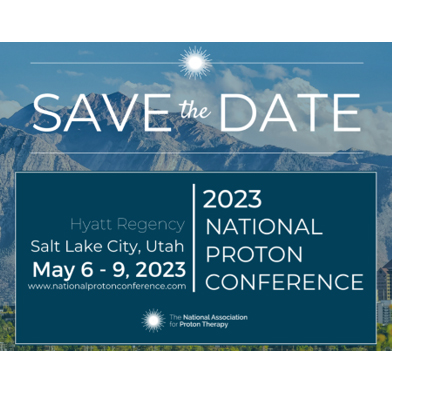 The National Association for Proton Therapy (NAPT) is a non-profit organization founded to educate and increase public awareness about the clinical benefits of proton beam therapy. Founded in 1990, the NAPT advocates to ensure patient choice and access to affordable proton therapy and to encourage cooperative research and innovation to advance the appropriate and cost-effective use of proton therapy.
The National Association for Proton Therapy (NAPT) is a non-profit organization founded to educate and increase public awareness about the clinical benefits of proton beam therapy. Founded in 1990, the NAPT advocates to ensure patient choice and access to affordable proton therapy and to encourage cooperative research and innovation to advance the appropriate and cost-effective use of proton therapy.
Each Spring, NAPT holds an annual conference, the National Proton Conference (NPC), that brings together leaders in the field of particle therapy with a robust agenda focused on emerging clinical research, operational efficiencies, insurance authorizations, and in recent years a partnership with PTCOG-NA to present a special session.
Deb Hickey plans to attend NPC 2023 – “Elevating Access, Research, and Innovation in the Field of Particle Therapy” – in Salt Lake City, UT, May 6-9.

A Message and a Request from NAPT's Executive Director
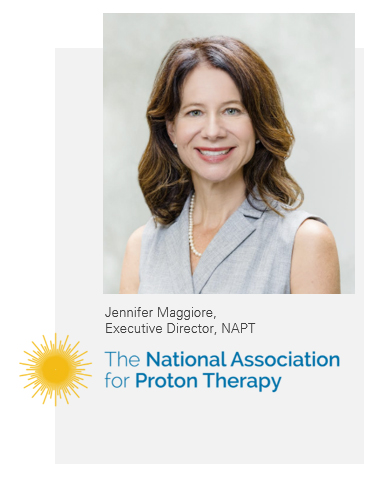 Happy New Year! The team at NAPT (National Association for Proton Therapy) is proud to collaborate with “Proton BOB” – the largest and oldest proton advocacy group in the world. Let me start by expressing my sincere appreciation to all of you for supporting our advocacy to protect patient access to proton therapy. Thousands of patients and clinicians voiced their concerns and asked Congress to reconsider a payment model that disproportionately cut reimbursement to proton therapy. Congress delayed the Radiation Oncology Alternative Payment Model (RO APM) in 2020 and 2021, and the Centers for Medicare and Medicaid Services announced this year that they would indefinitely delay the RO APM. Payment reform should be thoughtfully designed to encourage innovation and recognize the short- term and long-term value for cancer patients. NAPT will continue to work with cancer stakeholders and health policy leaders to ensure they understand the importance of patient access to advanced treatments and quality of life for cancer patients.
Happy New Year! The team at NAPT (National Association for Proton Therapy) is proud to collaborate with “Proton BOB” – the largest and oldest proton advocacy group in the world. Let me start by expressing my sincere appreciation to all of you for supporting our advocacy to protect patient access to proton therapy. Thousands of patients and clinicians voiced their concerns and asked Congress to reconsider a payment model that disproportionately cut reimbursement to proton therapy. Congress delayed the Radiation Oncology Alternative Payment Model (RO APM) in 2020 and 2021, and the Centers for Medicare and Medicaid Services announced this year that they would indefinitely delay the RO APM. Payment reform should be thoughtfully designed to encourage innovation and recognize the short- term and long-term value for cancer patients. NAPT will continue to work with cancer stakeholders and health policy leaders to ensure they understand the importance of patient access to advanced treatments and quality of life for cancer patients.
Our community still faces threats to patient access to proton therapy. Many cancer patients face unnecessary delays and denials of treatment, limiting their ability to receive timely and clinically appropriate care. I have talked to hundreds of patients who are fighting their insurance provider for coverage, in addition to managing the physical and emotional toll of a cancer diagnosis. NAPT has joined the Regulatory Relief Coalition to help influence change that supports physicians and their patients seeking specialty care. However, there is still much work to accomplish to fix the prior authorization process. We will address this issue through a strategic plan, which includes health economics research, education and awareness, and support for our members and their patients experiencing insurance denials and authorization delays.
As of this writing, 41 cancer centers are treating patients with proton therapy. Since 2010, we have seen an over 500 percent increase in treatment centers. Still, over two-thirds of the U.S. population lives over 100 miles from a proton treatment center. Your voice is critical to ensure increased access to proton therapy. Data regarding the patient experience help us educate health policy leaders and influence change in D.C. NAPT has joined the Cancer Support Community to gather data on the emotional, physical, practical, and financial impact of cancer. By taking the survey below, you join thousands of others in providing insight to change the future of cancer support for patients who need proton therapy. Please take a few minutes today to share your experience.
Join the Cancer Experience Registry | Cancer Support Community
As we look to 2023, I am hopeful for a future where patients won’t have to choose between the comfort of their homes and support of their families in exchange for treatment hundreds of miles away. We want a future where patients won’t have the burden of fighting for treatment recommended by their physician that provides them the best outcomes for a healthy life during and after treatment. Together we are supporting NAPT’s mission to increase the public’s awareness of the clinical benefits of proton therapy, encourage collaborative research to advance the industry, and ensure equitable access to proton therapy.


Last Month’s Brain Teaser
Here’s another for our “lateral thinking” members:
Two men got lost while exploring in the desert. Each had a compass. One headed due East and the other headed due West. Two hours later they met. How come?
Answer: The two men were not together when they got lost. They had nothing to do with each other until they chanced to meet.
Winner: Jim Cope of Greenville, SC, is the winner of last month’s BOB Tales brain teaser. Jim was treated with proton therapy at the University of Florida Proton Therapy Institute in 2010. He tells us his PSA has been low and steady. “Thanks for all you do to support prostate cancer patients. You’re a great resource for many people,” said Jim.
Congratulations, Jim! Your signed copy of Bob’s book is on the way!

New Brain Teaser
You have black socks, blue socks, green socks, and gray socks in your drawer. There are twice as many black socks as blue socks. There are three times as many black socks as green socks. There are twice as many gray socks as green socks. In the dark, how many socks do you need to pull out of the drawer to be sure you’ll get a pair of matching socks?
Hint: It’s much easier than you may think.
Send your brain teaser answer to [email protected] for a chance to win a signed copy of Bob Marckini’s NEW second edition book, You Can Beat Prostate Cancer.

It's All in the Context
A police officer came to my house and asked me where I was between five and six. He seemed irritated when I answered: “Kindergarten.”

Tough New Boss
Feeling it was time for a shakeup, a large company hired a new CEO. The new boss was determined to rid the company of all slackers.
On a tour of the facilities, the CEO noticed a guy leaning against a wall with folded arms. The room was full of workers, and he wanted to let them know that he meant business. He walked up to the guy leaning against the wall and asked, “How much money do you make a week?” A little surprised, the young man looked at him and replied, “I make $400 a week. Why?”
The CEO then handed the guy $1,600 in cash and screamed, “Here’s four weeks’ pay – now GET OUT and don’t come back.”
Feeling pretty good about himself, the CEO looked around the room and asked, “Does anyone want to tell me what that laggard did here?”
From across the room someone said, “Pizza delivery guy from Domino’s.”


Happiest Countries in the World
For the past 20 years The World Happiness Report has identified the world’s happiest countries using statistical analysis. Each year they evaluate performance in gross domestic product per capita, social support, healthy life expectancy, freedom to make your own life choices, generosity of the general population, and perceptions of internal and external corruption levels. Data is collected from 149 countries.
What are the top 10 happiest countries in 2022?
- Finland
- Denmark
- Iceland
- Switzerland
- Netherlands
- Luxembourg
- Sweden
- Norway
- Israel
- New Zealand
Least-happiest country? Afghanistan. Why? Primarily because of low life expectancy rate and poor economy. And these statistics were compiled before the Taliban takeover.
According to the study, the U.S. is ranked 19th happiest country.
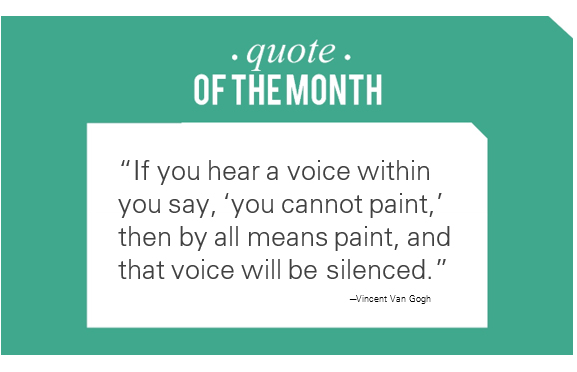

A Wish for Our Grandchildren
Paul Harvey was an American radio broadcaster from 1951 to 2008. His news and comments were always enjoyable listening for many years, especially, his “Rest of the Story” segments. Following is a segment from Paul Harvey titled, “A Wish for our Grandchildren.”
We tried so hard to make things better for our kids that we made them worse. For my grandchildren, I’d like better…
I’d really like for you to know about hand-me-down clothes and homemade ice cream and leftover meat loaf sandwiches. I really would. I hope you learn humility by being humiliated, and that you learn honesty by being cheated. I hope you learn to make your own bed and mow the lawn and wash the car. And I really hope nobody gives you a brand-new car when you’re 16. It will be good if at least one time you can see puppies born and your old dog put to sleep. I hope you get a black eye fighting for something you believe in.
I hope you have to share a bedroom with your younger brother/sister. And it’s all right if you have to draw a line down the middle of the room, but when he wants to crawl under the covers with you because he’s scared, I hope you let him. When you want to see a movie and your little brother/sister wants to tag along, I hope you’ll let him/her. I hope you have to walk uphill to school with your friends and that you live in a town where you can do it safely.
On rainy days when you have to catch a ride, I hope you don’t ask your driver to drop you two blocks away, so you won’t be seen riding with someone as uncool as your mom. If you want a slingshot, I hope your dad teaches you how to make one instead of buying one. I hope you learn to dig in the dirt and read books. When you learn to use computers, I hope you also learn to add and subtract in your head. I hope you get teased by your friends when you have your first crush on a boy/girl, and when you talk back to your mother that you learn what ivory soap tastes like.
May you skin your knee climbing a mountain, burn your hand on a stove, and stick your tongue on a frozen flagpole. I don’t care if you try a beer once, but I hope you don’t like it. And if a friend offers you dope or a joint, I hope you realize he is not your friend. I sure hope you make time to sit on a porch with your grandma/grandpa and go fishing with your uncle.
May you feel sorrow at a funeral and joy during the holidays. I hope your mother punishes you when you throw a baseball through your neighbor’s window and that she hugs you and kisses you at Hanukkah/Christmas time when you give her a plaster mold of your hand.
These things I wish for you – tough times and disappointment, hard work and happiness. To me, it’s the only way to appreciate life. Written with a pen. Sealed with a kiss. I’m here for you. And if I die before you do, I’ll go to heaven and wait for you.
Low PSAs to all,
Bob Marckini and Deb Hickey
To print the BOB Tales newsletter or view the newsletter with a larger font size, click here for the PDF file.
NO MEDICAL ADVICE: Material appearing here represents opinions offered by non-medically-trained laypersons. Comments shown here should NEVER be interpreted as specific medical advice and must be used only as background information when consulting with a qualified medical professional.



